The Mont Blanc massif is a mountain range at the tripoint of Switzerland, Italy and France. It is named after the Alp’s highest mountain, the Mont Blanc at 4808 meters.
Nowhere in the Alps there are so many mountains of over four thousand meters as here. Unsurprisingly, large parts of the Mont Blanc massif are covered by glaciers. Both Italy’s (Miage glacier) and France’s (Mer de Glace) longest glaciers are within the Mont Blanc massif. Furthermore, Bossons Glacier on the French side of Mont Blanc is the only glacier in the Alps that reaches well below the tree line.

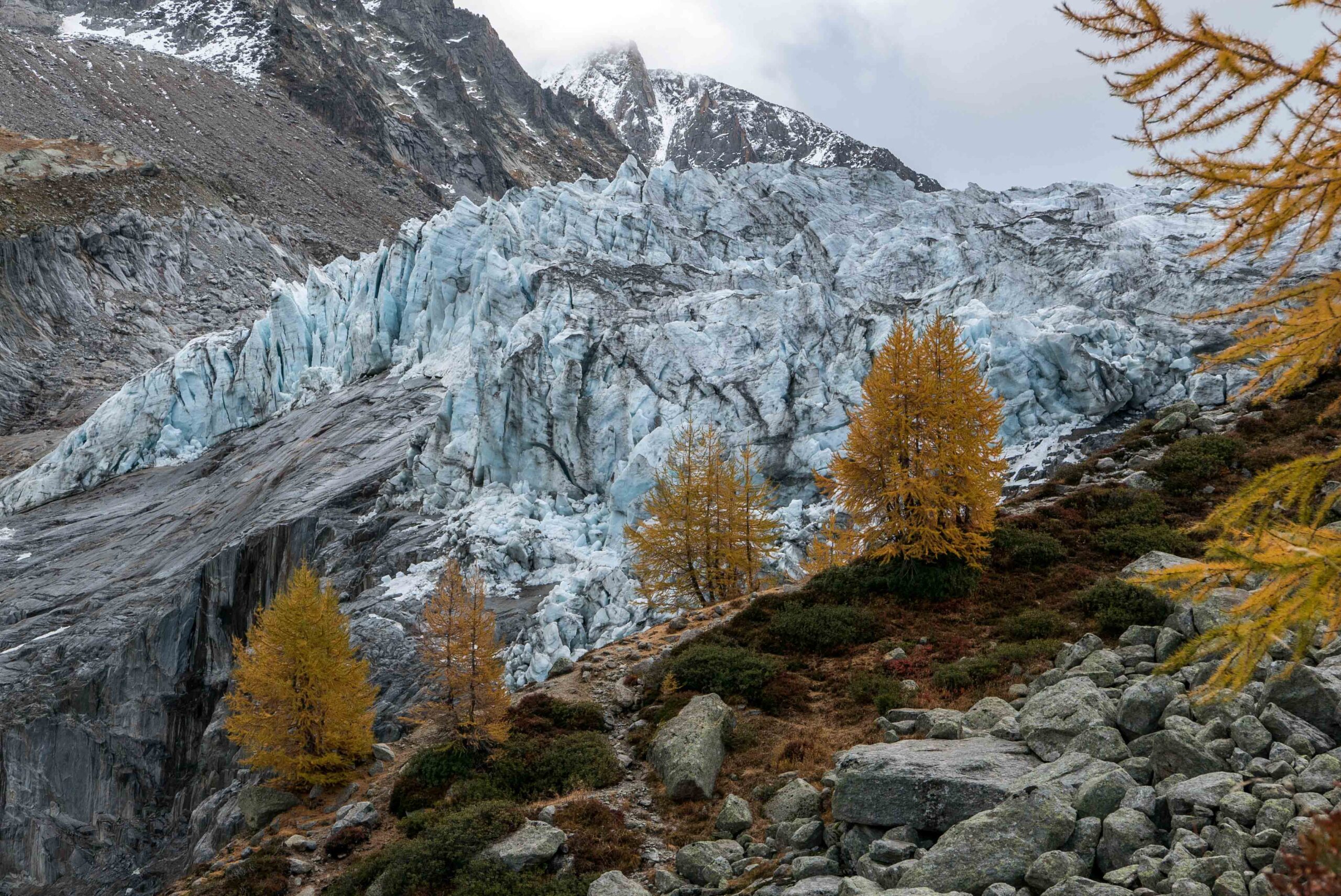
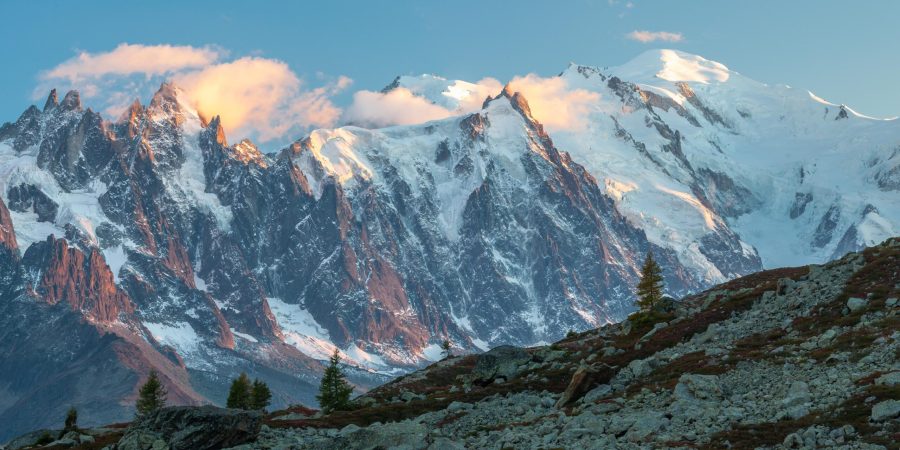
It’s no wonder the Mont Blanc massif is a magnet for all kinds of people. Mountaineering was more or less born here at the end of the eighteenth century, with the first successful ascent of Mont Blanc in 1786. In the main valley below, Chamonix has become a major tourist destination. Besides mountaineers, millions of tourist visit the region each year to experience the majestic mountains, ranging from high society guests to basic backpackers. Cable cars and mountain rack railways offer everyone the opportunity to see glaciers.
Top attractions will have to close, to put it in tourism terms. In not too long the major valley glaciers of the Mont Blanc massif will be gone. On top of that hiking and mountaineering becomes more and more dangerous because of climate change. The previously permanently frozen rock faces are thawing for the first time in thousands of years. Due to degrading ancient permafrost ice no longer holds the steep mountain walls together. Rock falls are more frequent every year. Global warming is not only killing glaciers, it is even threatening the very mountains they were formed upon.
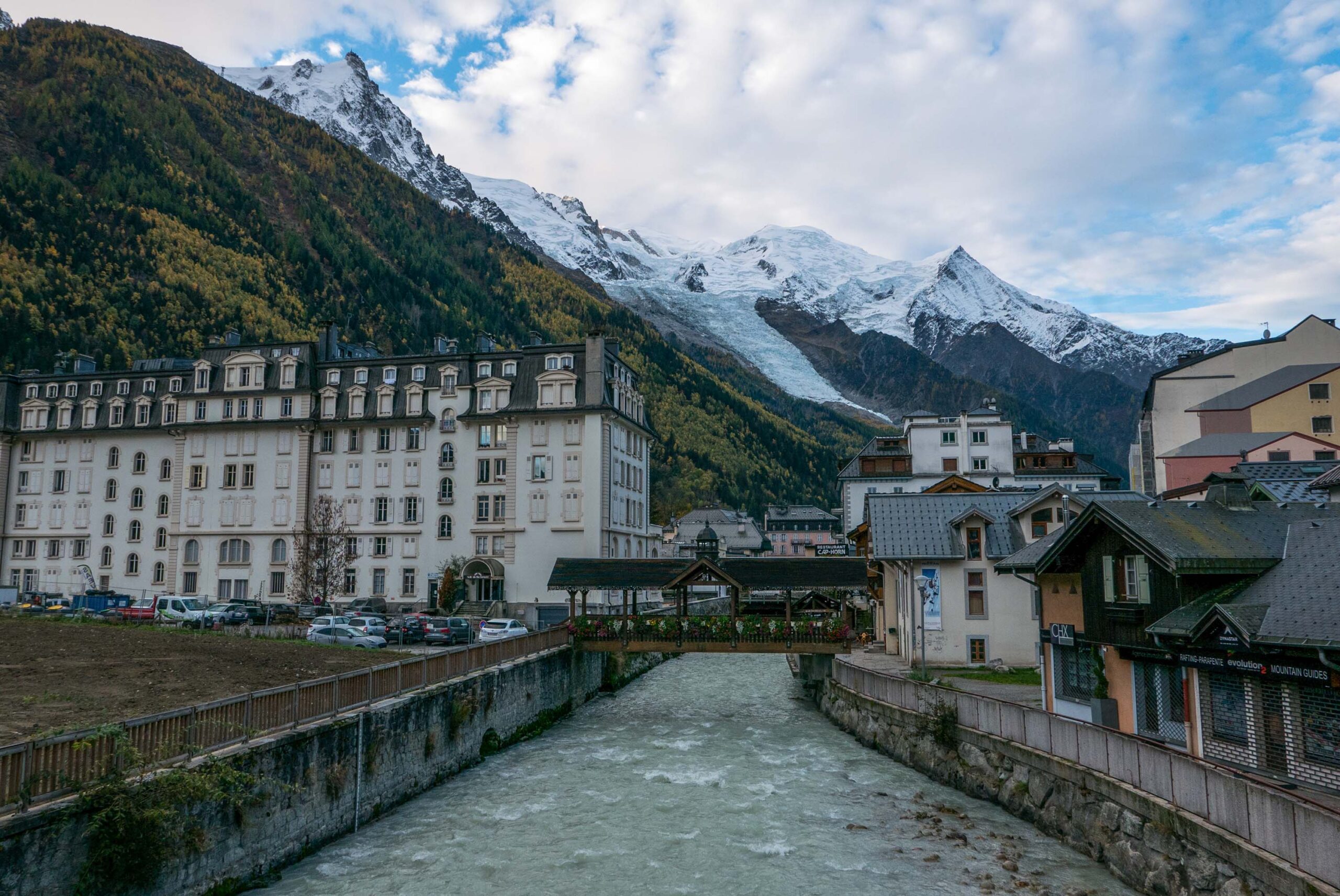
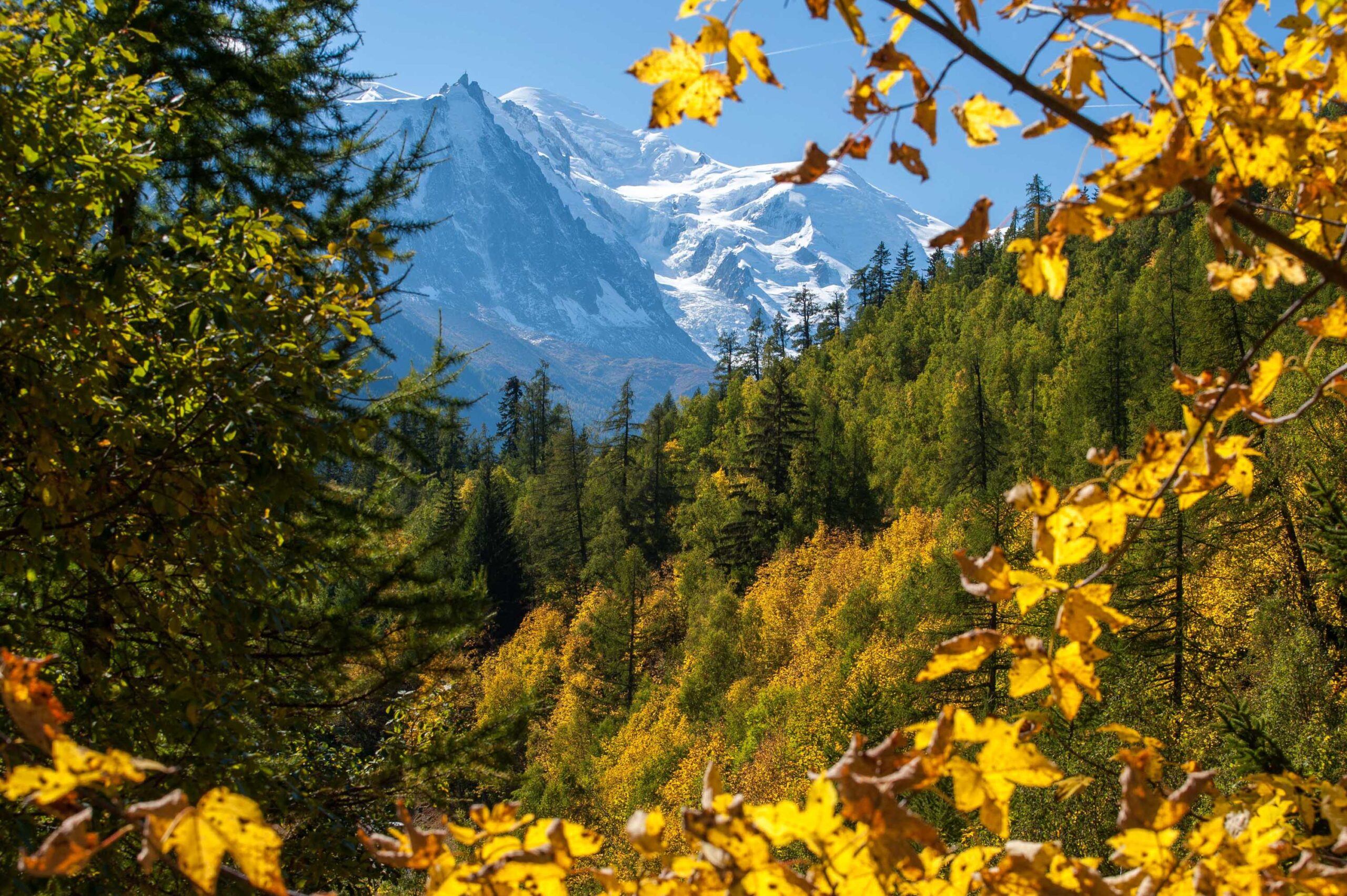
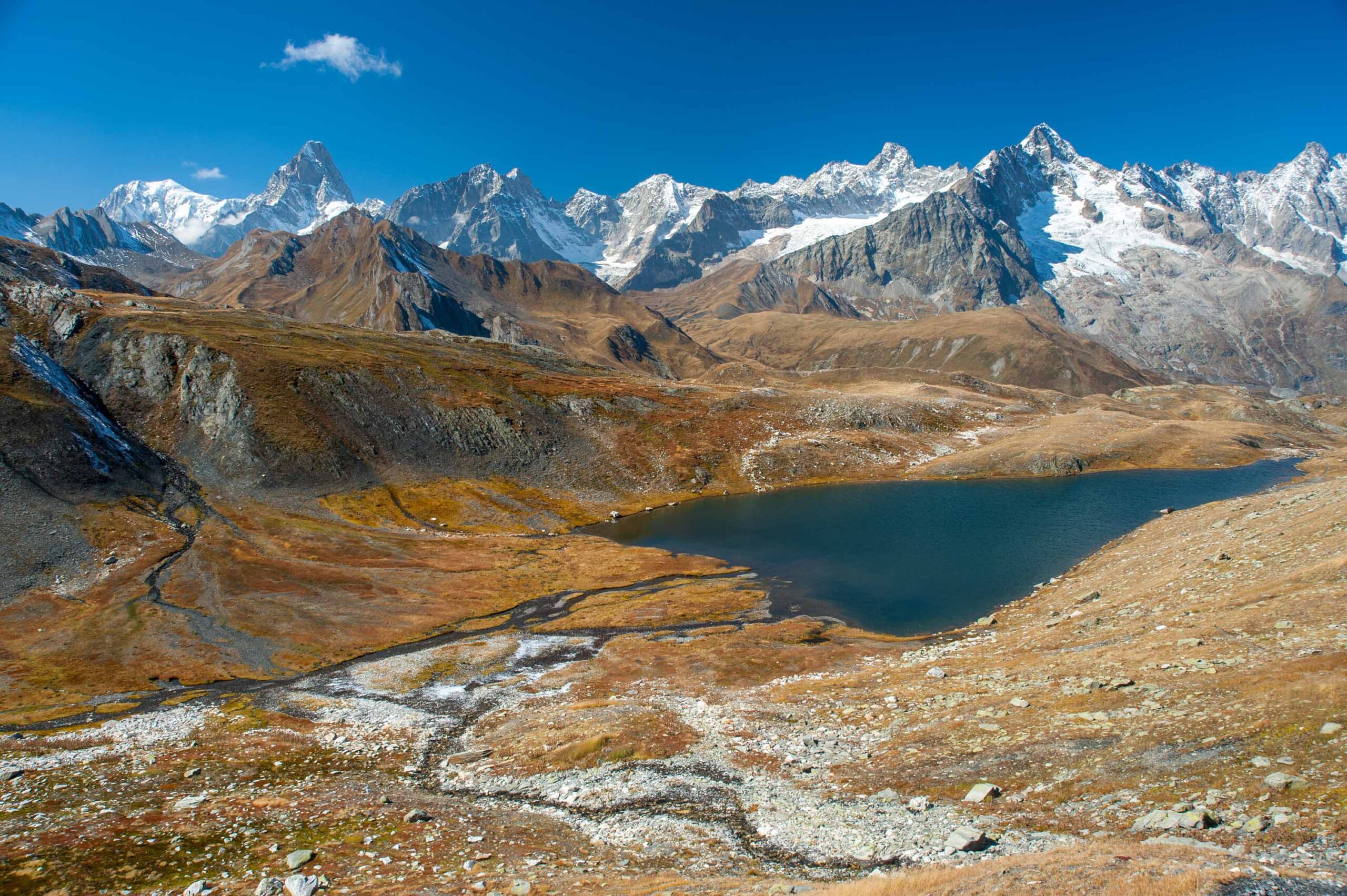
Search within glacierchange: